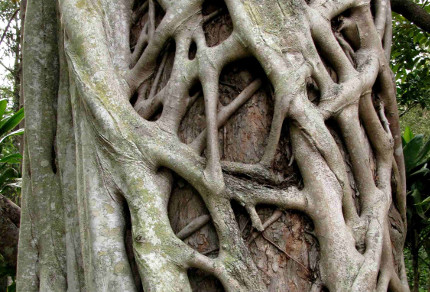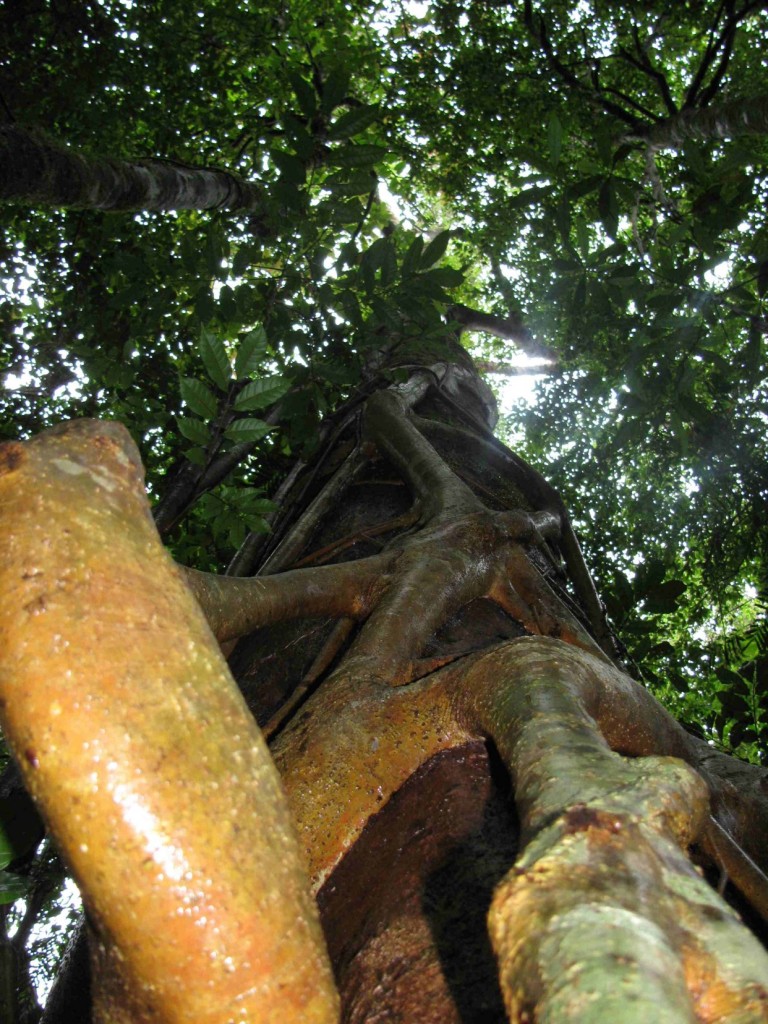
Strangler Fig, Paluma Ranges National Park, Queensland (© Vilis Nams)
With their interlacing roots forming lattice-like columns encircling host trees, strangler figs are striking components of tropical rainforests in many regions of the world. All strangler figs belong to the genus Ficus of the mulberry family Moraceae. They start their lives as seeds deposited by fruit-eating birds, bats, or monkeys foraging for fruit in the leafy canopies of rainforest trees. Strangler figs are regarded as keystone species within rainforests not only because they provide food for frugivores, but also because their hollow shells of interlaced roots offer shelter for many wildlife species.
During a year in Australia, Vilis and I first encountered strangler figs in a dense, dim Wet Tropics rainforest in Paluma Ranges National Park near Townsville, Queensland. At first sight, the stranglers appeared to be diabolical botanical villains intent on slow murder. In reality, they represented a highly successful life strategy within the intensely competitive arena of the tropical rainforest where sunlight and nutrients are vital resources.
An interpretive sign at Paluma explained that many ‘strangler figs’ are native fig species which have their seeds dispersed by frugivorous (fruit-eating) pigeons. After passing through the pigeons’ digestive tracts unharmed, the seeds often land high in the treetops. There they sprout and grow, sending roots down to the ground, where they compete with the host tree roots for nutrients. As the figs increase in size, they shade out the host tree’s leaves and wrap its trunk in a net of woody vines (the enlarged, descended roots) that constrict the host tree and restrict its growth. Eventually, the host tree dies, ‘strangled’ by the fig battling for its place in the sun among the rainforest giants.
We encountered more strangler figs during explorations of other Wet Tropics rainforests in Girringun and Daintree National Parks in north Queensland and in a Dry Tropics rainforest in Eungella National Park in central Queensland. A strangler beside a bushwalking track in Girringun National Park (below left) was in the early stages of encasing a host tree, while one of the hemiepiphytes in Eungella National Park (below right) had grown a woody lattice over much of the host’s trunk.
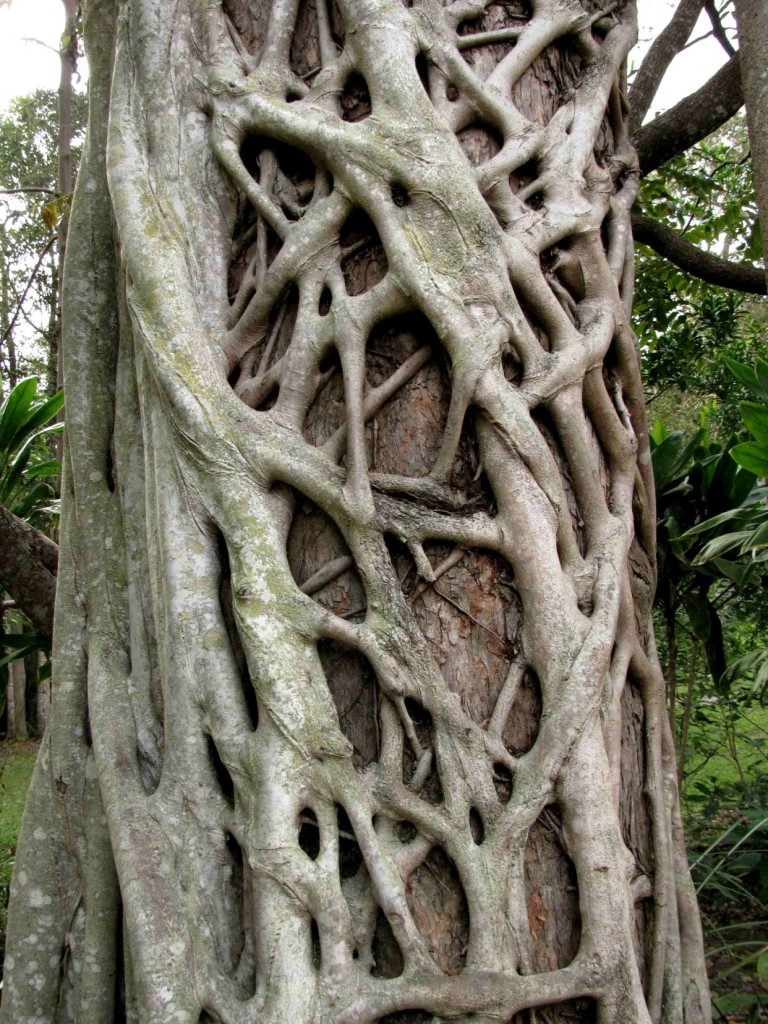
Strangler Fig, Broken River, Eungella National Park, Queensland (© Vilis Nams)
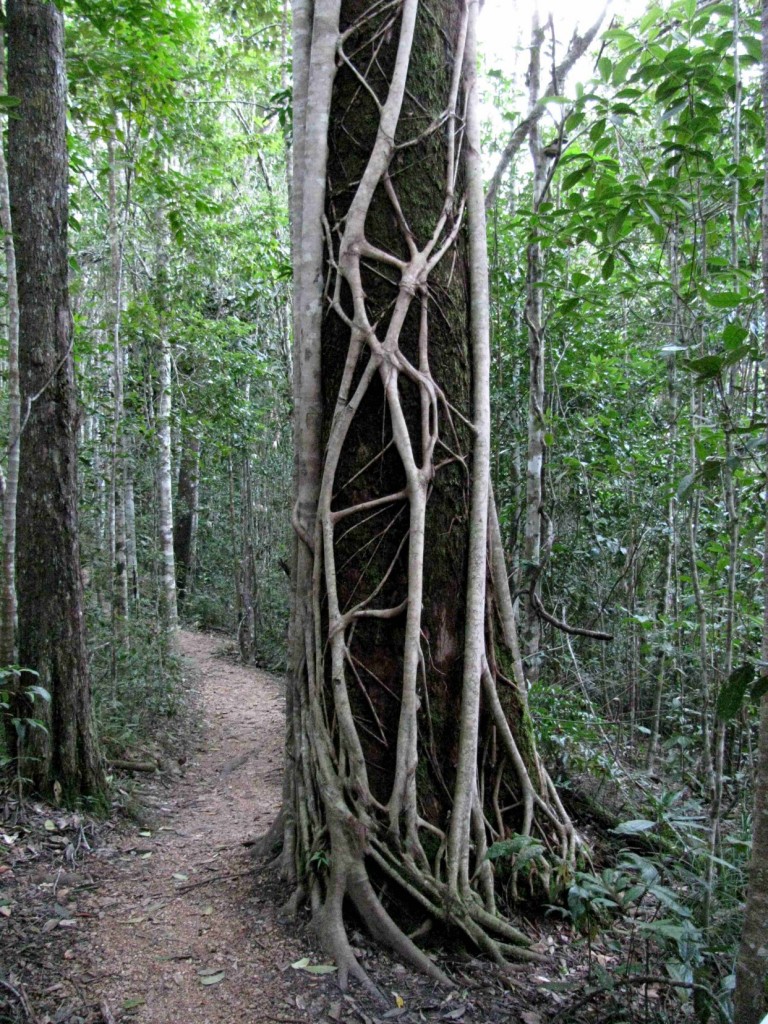
Stranger Fig, Girringun National Park, Queensland (© Vilis Nams)
Within the incredibly diverse rainforests of Daintree National Park, we found a huge strangler that had killed its host and stood as a cylinder of interwoven roots towering to the sky. I could well imagine it as a home for countless creatures and checked for snakes and spiders before stepping inside!
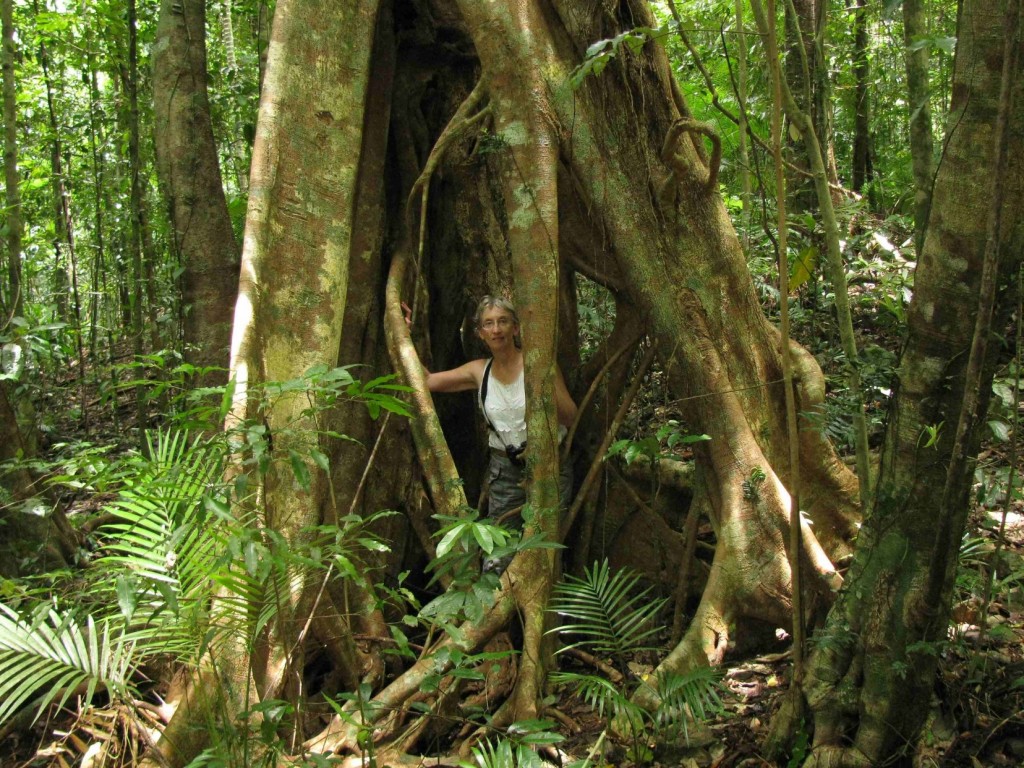
Here I’m inside the base of a strangler fig at Jindalba, Daintree National Park, Queensland (© Vilis Nams)

